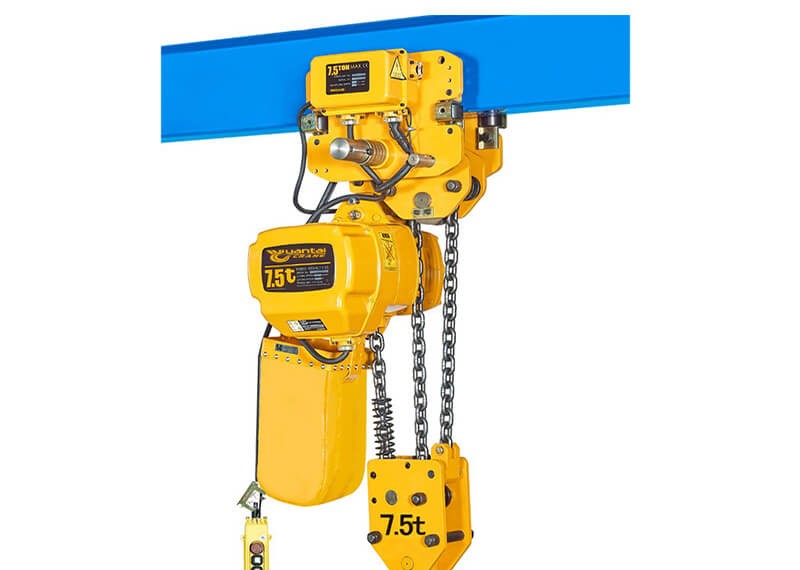
How does the chain electric hoist complete the lifting?
The electric chain hoist control system includes various manipulators, displays and related components and circuits, which is the interface that embodies the man-machine safety requirements of cranes.
The lifting mechanism, operating mechanism, luffing mechanism and rotating mechanism of electric chain hoist are known as the four major mechanisms of cranes. The crane achieves the purpose of transporting materials through the single movement of a certain mechanism or the combined movement of multiple mechanisms.
The luffing mechanism is a mechanism that changes the working range by changing the length and elevation angle of the boom.
The rotating mechanism can make the boom rotate around the vertical axis of the crane, so that the crane can move materials in the annular space. The luffing mechanism and the rotating mechanism are the unique working mechanism of the jib crane.
The electric chain hoist lifting mechanism is a mechanism used for vertical lifting of materials, and is the most important and basic mechanism of a crane. As long as there is a lifting mechanism, the mechanism can be called a lifting device.
The operating mechanism is the mechanism used to realize the horizontal handling of materials. Some operating mechanisms are only used to adjust the working position of the crane. Through electrical and hydraulic systems, the crane driver can control the movement of the crane to ensure the smooth progress of lifting tasks and prevent accidents.
Through the manipulation of the electric chain hoist control system, the driving device converts the power energy input into mechanical energy, and transmits the force and movement speed to the fetching device.
The fetching device then connects the material to be transported with the crane, and completes the task of material handling through independent or combined movement of the working mechanism.
The movable metal structure connects the various components into a whole and carries the weight and lifting weight of the crane.


